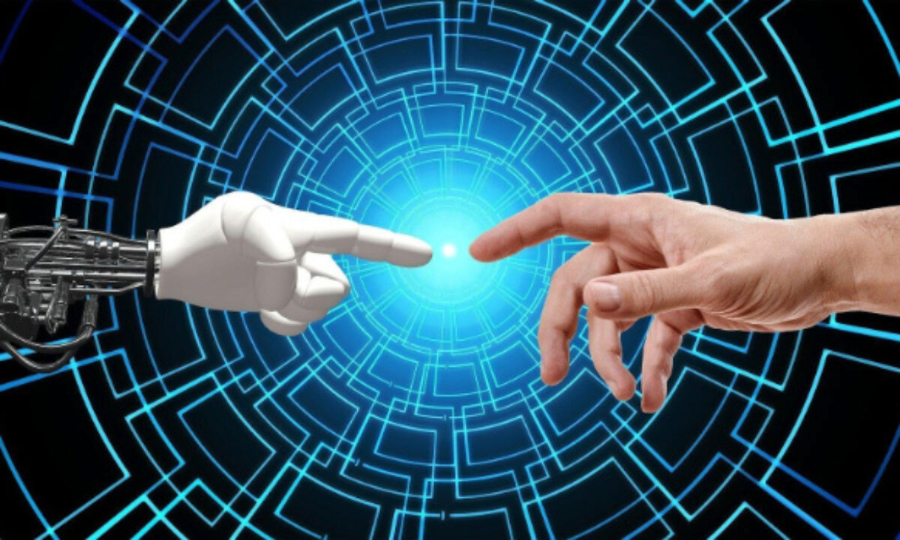Recent Trends in Machine Learning
Major advancements in a variety of industries are driven by the field of machine learning and artificial intelligence. The AI market is expected to grow to $500 billion in 2023 and $1,597.1 billion in 2030. This indicates that there will be a continued strong demand for machine learning technologies in the foreseeable future. But the machine learning sector is changing quickly; fresh scientific findings and technological advancements dictate the creation of new goods and services. By the end of 2022, everyone is searching for the most promising trends for the upcoming year, from company founders to machine learning engineers. Go on reading this article to find out about some of the most popular trends that will be in style in the following year.
Model of Foundation
Big language models represent a significant technological advancement that has gained traction recently and is most likely here to stay in the near future. Compared to normal neural networks, foundation models are artificial intelligence tools that are trained on enormous volumes of data. By educating the machines to learn in addition to looking for patterns, engineers hope to reach a new level of comprehension. In the areas of coding and translation, customer assistance, and content creation and summarizing, foundation models are immensely useful. Examples of well-known foundation models include Mid Journey and GPT-3.
Machine Learning based on multimodal
When performing tasks like computer vision or natural language processing, which need the model to interact with the actual world, the model is frequently limited to using only one kind of data—text or images. However, in reality, our senses of smell, hearing, touch, taste, and texture all play a part in how we take in the environment. Multimodal machine learning proposes that we may improve our models by using the fact that there are various ways (referred to as modalities) in which we might experience the world around us. In AI, the word “multimodal” refers to the process of creating machine learning models that, like human perception, can process information in numerous modalities at once. It is possible to create an MML by integrating several information kinds and applying them to training.
Machine Learning Trends in 2023
Transformers
Transformers are a subset of artificial intelligence architecture that use encoders and decoders to perform transduction, or transformation, on an input sequence of data, converting it into a different sequence. Transformers are also the cornerstone of many foundation models. Since they are utilized for numerous additional purposes, we felt it was important to highlight them separately. Transformers are actually reportedly sweeping the AI industry.
Retrieval-augmented generation
Despite being widely used in 2023, generative AI technologies are still beset by the issue of hallucinations, which causes them to provide users with answers to their inquiries that seem logical but are actually inaccurate. Due to the potential for catastrophic hallucinations in situations involving customers or business criticality, this shortcoming has been a barrier to enterprise adoption. The reduction of hallucinations through retrieval-augmented generation (RAG) has gained traction, and this could have a significant impact on the deployment of AI in enterprise settings. RAG improves the precision and pertinence of AI-generated content by combining text synthesis with information retrieval. It gives LLMs access to outside data, which aids in their ability to provide responses that are more precise and sensitive to context. Eliminating the necessity of storing all information directly in the LLM also results in a smaller model, which boosts efficiency and decreases expenses.
Machine Learning based on Embedding
One of the main factors propelling the chipset manufacturing sector is the growing acceptance of embedded machine learning systems. Moore’s law predicted that a chipset’s transistor count would double every two years a decade ago, allowing us to forecast increases in computing power. However, in recent years, we have witnessed an annual growth in computing power of 40–60%. We think that this trend will continue throughout the next years. Embedded systems are becoming progressively more crucial as IoT and robotics become more widely used. Since tiny ML demands maximum efficiency and optimization while conserving resources, it presents its own special issues that will still need to be addressed in 2023.
Conclusion
Machine learning is expected to be a dynamic and fast-expanding subject in 2023, with a number of intriguing advancements to come. Tiny ML, transformers, large language models, multimodal machine learning, low- and no-code solutions, and these developing technologies will all become very important in the near future. In 2023, ML will be used more and more in a number of technical domains, including distributed enterprise management, autonomous systems, creative AI, and cyber security. According to Gartner, machine learning (ML) will permeate even more corporate domains in 2023, boosting productivity and job security. Keep an eye on our blog and follow us on Twitter to learn about the most recent developments in the ML business and to receive motivation from top experts in the field.
Source

